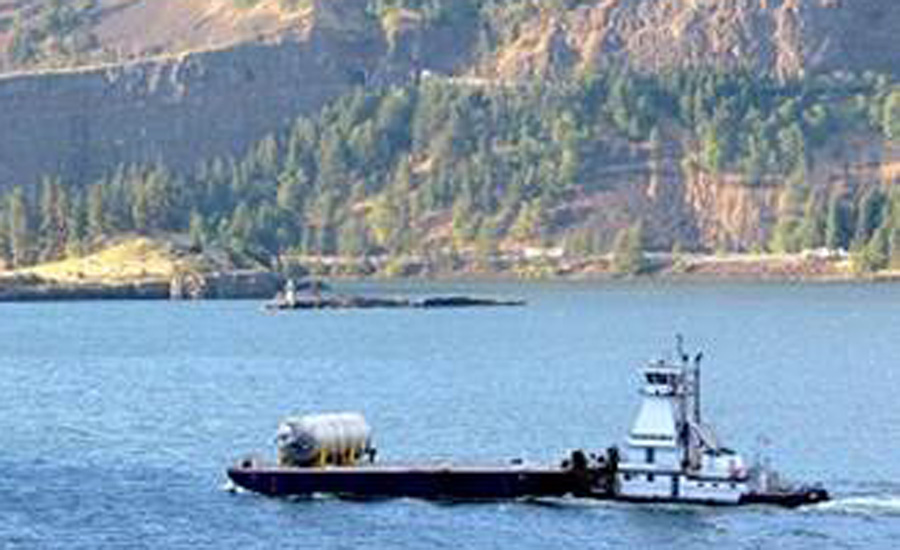As the Hanford Vit Plant in southeastern Washington prepares to vitrify 56 million gallons of radioactive waste, the plant gets an assist from a new vessel to help test the process.
A 65-ton vessel, owned by Washington State University Tri-Cities, arrived in Richland, Washington, this week, a full-scale prototype of several vessels expected to process liquid radioactive waste containing solids. Bechtel is building the plant at Hanford for the U.S. Dept of Energy, all part of the plan to turn the nation’s most complex nuclear waste, much of it dating back to World War II and the 1940s, stored in tanks into vitrified glass.
The vessel was fabricated in Vancouver, Washington, and Corvallis, Oregon, by Greenberry Industrial and will be loaded into the full-scale vessel test facility at Hanford through the roof and placed in a specially designed test stand. Reassembling the test stand and completing preparations for testing will take several months. The yearlong testing program will likely start in late 2016. The 35-ft-high, 16-ft diameter stainless steel test vessel has a volume of 22,000 gallons, equivalent to 2.5 tanker trucks.
The pulse-jet mixers inside the vessel—which work like a turkey baster by withdrawing fluid and expelling it—prove critical to mixing performance. Testing can confirm that the mixers and control systems meet the needs of Hanford’s radioactive liquid waste with a wide range of chemical and physical characteristics.
For the testing, non-radioactive fluid and particulate material, simulating the Hanford tank waste, will fill the vessel, bringing the operating weight to 310 tons. Earlier testing using a smaller vessel confirmed the control equipment can reliably operate the pulse-jet mixers, but this will be the first test at full scale.
Test results will then support technical decisions moving forward on construction of the plant’s facilities.
Follow Tim Newcomb on Twitter at @tdnewcomb.


Post a comment to this article
Report Abusive Comment